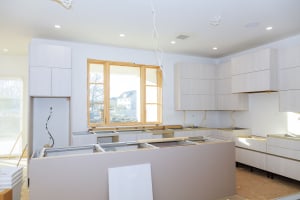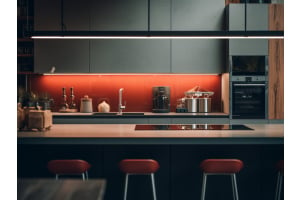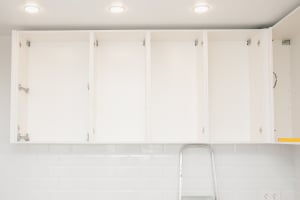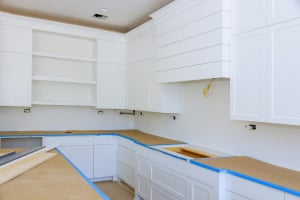If you’re considering floating cabinets as a feature in your home, we will be the first to congratulate you–floating wall cabinets are a great choice, as they are elegant, functional, and will provide much more space compared to traditional floor-mounted cabinets. With a wide range of options available, you can find floating cabinets to perfectly suit all interior spaces.
There are many different styles of kitchen cabinets on the market today, and when it comes to floating cabinets, it’s essential to know where to start. In this article, we offer a guide to help you understand how to correctly support your floating kitchen cabinets.
Choose the Right Cabinet and the Right Location
It’s important you select your floating cabinets carefully–be sure they are designed in such a way as to be anchored to the wall without leg supports. Furthermore, make sure the materials you’ve chosen for your cabinet are sturdy and won’t warp or bend without floor support.
When it comes to where to support your wall cabinets, you must ensure that the wall has enough strength to support the screws or anchors that will be inserted into the wall on which your cabinets will be placed.
Supplies
You will need some basic supplies in order to properly secure your floating cabinet; the most important tool is an appropriate mounting system. This includes anchors, screws, and wall studs.
You will want some wood glue and caulk tape, as well as two pieces of wood that are the same size as your cabinet's sides to help secure the mounting system in place and provide additional support for your cabinet. Finally, make sure you have a level so that you can ensure that everything is perfectly laid out before it’s secured in place.
Installing Your Mounting System
Once you have all of the necessary supplies, it’s time to begin installing the mounting system for your floating cabinet. Start by measuring where you would like the cabinet to be hung. If this is a top-level cabinet, it should be installed above counter height so that it doesn’t get in the way when people are cooking or doing dishes. For base-level cabinets, it will depend on personal preference, but usually, they will be anywhere from four to sixteen inches above ground level. Once you have determined the location, mark off where each anchor needs to go using a pencil or marker on the wall behind it.
Next, take one piece of wood and place it against the wall so that its flat side is facing outwards. It should cover up all of your markings. Use wood glue around the edges before placing caulk tape over it so that everything stays in place while you install your mounting system onto this piece of wood. Secure each anchor into place on top of this piece of wood using screws provided by your mounting system kit before repeating these steps with another piece of wood on top of this one. Again, make sure everything is level before securing each anchor into place.
Securing Your Floating Cabinet
Once everything has been installed correctly onto the wall studs or anchors provided by your mounting system kit, to secure your cabinet into place, slide the backside edge of your cabinetry unit—along with its shelf supports—onto these anchors until they click into place securely. You may need someone else to give a helping hand here.
In Summary
That’s it! Securing a floating cabinet can seem intimidating at first, but by following a few simple steps, it is possible to learn how to support floating cabinets correctly. Take your time, check your measurements, enjoy the process, and sit back and appreciate your handicraft skills.













